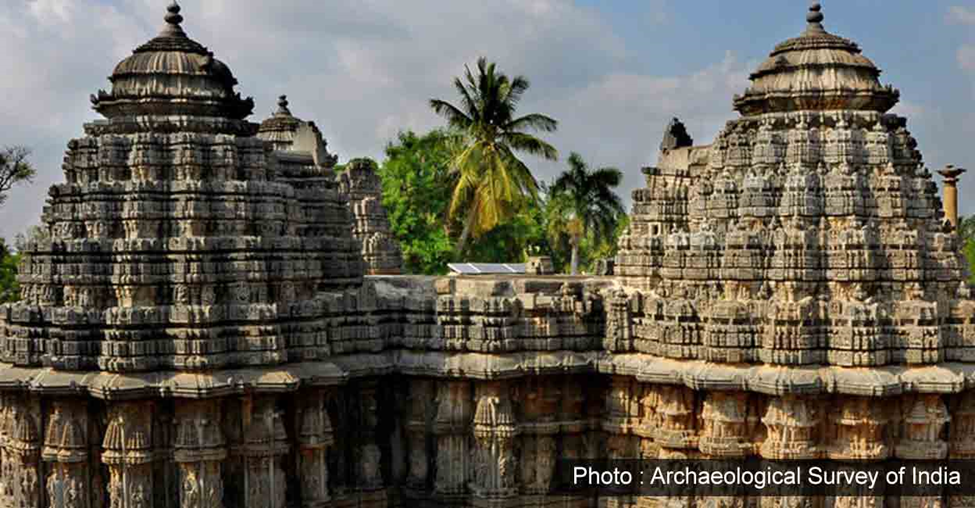Sacred Ensembles of the Hoysalas:A UNESCO World Heritage Site

The rich cultural tapestry of India recently gained another accolade as the ancient Hoysala temples, known as the 'Sacred Ensembles of the Hoysalas', have been declared a UNESCO World Heritage Site. This monumental recognition was conferred upon the sacred temples of Belur, Halebid, and Somnathapura located in Karnataka during the 45th session of the World Heritage Committee held in Riyadh, Saudi Arabia.

Key Highlights:
1. Historical Significance:
The Sacred Ensembles of the Hoysalas were crafted by the early Hoysala rulers who, in establishing their kingdom, created a unique sacred architectural style, distinguishing their temples from others of the era, while also imbibing inspirations from contemporary kingdoms and dynasties.
2. Temple Ensemble Details:
- Chennakeshava Temple, Belur: This temple stands at the heart of a temple complex in Belur, surrounded by remnants of a mud fort and a moat. Further, a culturally significant tank lies on the southern side, outside the fort's confines.
- Hoysaleshvara Temple, Halebidu: This temple is situated on the banks of the Dorasamudra tank. Halebidu town itself is rich in history with many protected and unprotected temples, archaeological sites, and the remains of fortifications and gateways.
- Keshava Temple, Somanathapura: Located at the center of Somanathapura village, this temple is encircled by a multi- celled prakaara (enclosure). The open ground surrounding the temple displays various artifacts.
3. Architectural Evolution:
The Hoysala temple design emerged from the fusion of several architectural traditions, including the Nagara style from North India, the Dravida style from South India, the Bhumija style from Central India, and the Karnata Dravida style from the Kalyani Chalukyan territories.
4. Protection Status:
Each of these Hoysala temples are under the protection of the Archaeological Survey of India (ASI). They collectively epitomize the pinnacle of human creativity, showcasing India's vast historical and cultural legacy.
5. Journey to Recognition:
- Sacred Ensembles of the Hoysalas have been on UNESCO’s tentative list since April 2014.
- India presented the nomination dossier for the ensemble to the UNESCO World Heritage Centre in January 2022.
- India, currently a member of the World Heritage Committee for the period 2021-25, saw the ensemble's recognition proposal tabled on September 18 and the motion was passed unanimously, without any discussion.
This recognition of the 'Sacred Ensembles of the Hoysalas' as a UNESCO World Heritage Site, coming closely on the heels of a similar honor for Santiniketan, brings India's tally to 42 such distinguished sites.
Each of these sites serves as a timeless testament to the nation's profound historical, artistic, and cultural contributions to the world.